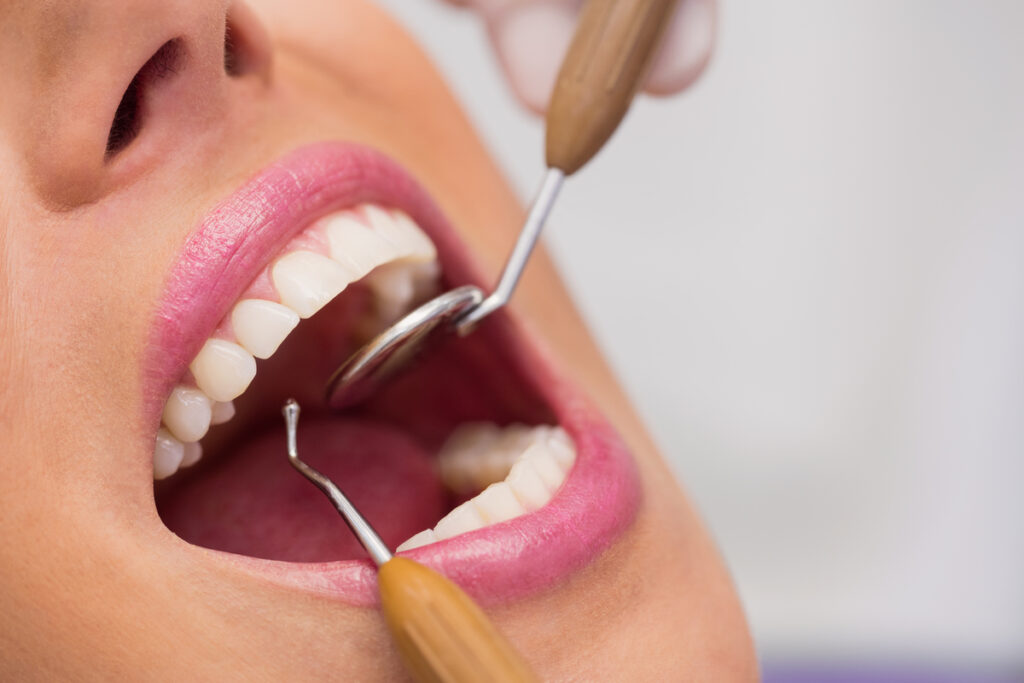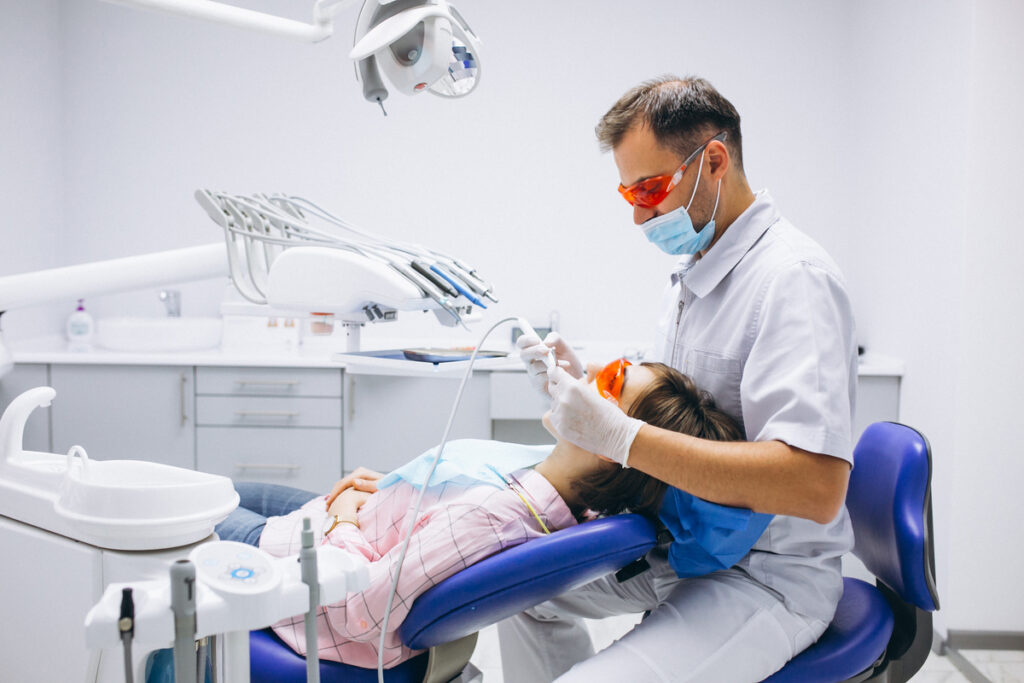When Did Dentistry Start

Introduction
When Did Dentistry Start: The field dedicated to the study, diagnosis, and treatment of oral health, has a long and fascinating history that stretches back thousands of years. The origins of dentistry can be traced back to ancient civilizations, Dentistry Start where early forms of dental care and treatments were practised. While the understanding and techniques of dentistry have evolved significantly over time, the importance of oral health has remained a constant.
The precise origins of dentistry are difficult to pinpoint, as dental practices were likely intertwined with early medical practices. However, evidence suggests that ancient Egyptians were among the earliest civilizations to have rudimentary dental procedures. Archaeological findings have revealed dental work, such as crude dental fillings made from materials like resin and animal teeth, in mummies dating back to around 2000 BCE.
Throughout history, various cultures and civilizations made progress in dentistry. The ancient Greeks and Romans explored tooth extractions and prosthetics, while ancient Chinese writings discussed dental diseases and treatments. In the Middle Ages, dental care was often performed by barbers and specialised tooth-pullers.
The establishment of dentistry as a distinct profession began to take shape in the 18th and 19th centuries. Advancements in dental tools, such as the invention of the dental drill and improvements in anaesthesia techniques, allowed for more sophisticated treatments. The 19th century witnessed the birth of dental schools and the professionalisation of dentistry as a specialised field of medicine.
Since then, dentistry has continued to progress rapidly, embracing new technologies and techniques to improve oral health outcomes. Today, dentistry encompasses a wide range of specialties, from preventive care to cosmetic dentistry and advanced restorative procedures.
What are the earliest known civilizations to have practised dental care?
The earliest known civilizations to have practised dental care can be traced back to ancient times. One of the notable civilizations is ancient Egypt, where evidence of dental practices has been found in mummies dating back to around 2000 BCE. Archaeological discoveries have revealed crude dental fillings made from materials like resin and animal teeth. The ancient Egyptians were known to have specialised dental practitioners who performed basic dental procedures and treatments.
In ancient China, there were early writings that discussed dental diseases and treatments. The Chinese recognized the importance of dental health and developed various methods to address dental problems, Dentistry Start including tooth extractions and the use of herbal remedies for toothache relief.
These ancient civilizations laid the groundwork for dental care and established early practices that have contributed to the development of modern dentistry. Their understanding of oral health and the treatments they employed form a significant part of the historical journey of dentistry.

How far back in history can evidence of dental work be found?
Evidence of dental work can be found as far back as ancient civilizations, providing insights into the early practices of oral healthcare. The oldest known evidence of dental work dates back thousands of years. In ancient Egypt, mummies dating around 2000 BCE have revealed signs of dental treatments. Crude dental fillings made from materials like resin and animal teeth have been found in these mummies, Dentistry Start indicating the presence of early dental interventions.
Further evidence of dental work can be found in ancient civilizations such as the Indus Valley Civilization, which existed around 3300-1300 BCE. Archaeological excavations have uncovered evidence of dental procedures, including drilling and filling of teeth using primitive tools.
The discovery of ancient dental instruments, like dental drills and tooth extraction tools, further supports the existence of dental work throughout history.
While the exact techniques and effectiveness of these early dental practices may vary from modern standards, the evidence demonstrates the long-standing awareness of dental health and the attempts made by ancient civilizations to address dental issues. These findings shed light on the historical development of dentistry and the continuous efforts to improve oral healthcare over time.
What were some of the early dental procedures and treatments?
In ancient Egypt, dental practices included the use of rudimentary dental fillings made from materials like resin and animal teeth. Evidence suggests that dental extractions were also performed when necessary. Ancient Greek and Roman civilizations emphasised dental hygiene, tooth extractions, and the use of dental prosthetics like bridges and dentures made from materials such as gold or animal teeth. In ancient China, Dentistry Start early dental treatments included tooth extractions, the use of herbal remedies for toothaches, and the application of acupuncture for dental pain relief.
The Etruscans, an ancient civilization in Italy, practised dental prosthetics using gold bands and wires to stabilise loose teeth. Additionally, some ancient cultures resorted to dental remedies and rituals, often involving spiritual or magical beliefs, to address dental issues.
These early dental procedures and treatments, while limited by the available knowledge and tools of the time, demonstrate the ancient civilizations’ recognition of the importance of dental health and their attempts to alleviate dental pain and restore oral functionality. They laid the foundation for the development of more sophisticated dental techniques and treatments in subsequent centuries.
Which ancient cultures made advancements in dentistry?
Several ancient cultures made significant advancements in dentistry, contributing to the development of oral healthcare practices. One such culture is ancient Egypt, where evidence suggests the existence of specialised dental practitioners and rudimentary dental procedures.
The ancient Egyptians utilised materials like resin and animal teeth for dental fillings and performed tooth extractions when necessary. In ancient Greece, notable scholars like Hippocrates and Aristotle wrote about dental diseases and treatments, while Herophilus conducted experiments in tooth extractions. The Romans, Dentistry Start influenced by Greek knowledge, emphasised dental hygiene, tooth extractions, and dental prosthetics. They even had dental specialists known as “dentifrices.”
The Etruscans, an ancient civilization in Italy, practised dental prosthetics using gold bands and wires. These cultures made advancements in understanding dental diseases, developing treatments, and exploring dental prosthetics, laying the foundation for the progression of dentistry as a specialised field. Their contributions demonstrate an early recognition of the importance of oral health and the continuous quest for improved dental care throughout ancient history.

When did dentistry begin to emerge as a distinct profession?
Dentistry began to emerge as a distinct profession in the 18th and 19th centuries. During this period, significant advancements were made in dental knowledge, tools, and techniques, leading to the professionalisation of dentistry. In 1723, French surgeon Pierre Fauchard published “The Surgeon Dentist,” considered one of the first comprehensive books on dentistry.
Fauchard’s work laid the foundation for modern dentistry, introducing concepts such as tooth anatomy, dental prosthetics, and oral hygiene practices. In the 19th century, Dentistry Start gained recognition as a specialised field with the establishment of the first dental schools. The Baltimore College of Dental Surgery, founded in 1840, was the first dental school in the world. These educational institutions provided formal training and education for aspiring dentists, setting professional standards and promoting scientific research in the field.
The development of dental organisations and associations, such as the American Dental Association (ADA) in 1859, further solidified dentistry as a distinct profession. With the growth of dental knowledge, advancements in dental tools, and the establishment of professional institutions, dentistry underwent a transformation, evolving into a recognized and specialised healthcare profession dedicated to the study, diagnosis, and treatment of oral health issues.
What were some significant developments in dental tools and anaesthesia techniques?
Anaesthesia techniques also underwent significant advancements. The discovery and implementation of local anaesthesia in dentistry, notably the use of novocaine and lidocaine, revolutionised patient comfort during dental procedures by numbing specific areas. This breakthrough allowed for painless tooth extractions, fillings, and other dental interventions.
Furthermore, the development of intravenous (IV) sedation and general anaesthesia brought about a new level of comfort and relaxation for patients undergoing complex or lengthy dental procedures. IV sedation, administered through a vein, Dentistry Start induces a deeply relaxed state while still allowing the patient to remain conscious and responsive. General anaesthesia, on the other hand, renders the patient completely unconscious and is typically reserved for more extensive surgeries or individuals with specific medical conditions.
These advancements in dental tools and anaesthesia techniques have significantly improved patient experiences, reducing pain and anxiety associated with dental treatments. They have also enabled dentists to perform more intricate procedures with greater precision, ultimately enhancing the overall quality of dental care.
When were dental schools established?
Dental schools were established in the 19th century, marking a crucial milestone in the professionalisation of dentistry as a distinct field of study. The first dental school in the world, the Baltimore College of Dental Surgery, was founded in Baltimore, Maryland, United States, in 1840. It was followed by the establishment of the Philadelphia College of Dental Surgery in 1852, becoming the second dental school in the United States. These pioneering institutions provided formal education and training programs specifically tailored to dental medicine, Dentistry Start focusing on the study of oral health, dental anatomy, dental procedures, and oral disease management.
The dental school movement gained momentum, and several more dental schools were founded in subsequent years. The Harvard School of Dental Medicine was established in Boston, Massachusetts, in 1867, while the University of Michigan School of Dentistry was founded in 1875. As dental education became more structured and standardised, additional dental schools emerged across the United States and internationally. The establishment of dental schools not only helped train future generations of dentists but also contributed to the advancement of dental knowledge, research, and specialised dental techniques.
Today, dental schools continue to play a vital role in dental education and the development of oral healthcare professionals worldwide. These institutions provide comprehensive academic programs, clinical training, and research opportunities, Dentistry Start ensuring that dental graduates are well-prepared to deliver high-quality dental care and contribute to the ongoing advancement of the field.

How has dentistry evolved and progressed over time?
Dentistry has undergone remarkable evolution and progress throughout history. From ancient civilizations to the modern era, advancements in dental care have transformed the field, enhancing both the understanding of oral health and the quality of treatment. In ancient times, dental care primarily focused on tooth extraction and rudimentary remedies for tooth pain. However, as civilizations flourished, dentistry evolved, and ancient societies like the Egyptians and Greeks developed dental prosthetics, fillings, and early dental hygiene practices.
The Renaissance marked a significant turning point, as anatomical studies and scientific exploration led to a deeper comprehension of oral anatomy and dental diseases. The 18th and 19th centuries witnessed the birth of modern dentistry, Dentistry Start with key figures like Pierre Fauchard and Horace Wells introducing concepts such as dental restorations, local anaesthesia, and the understanding of dental caries.
The 20th century witnessed groundbreaking developments in dentistry, including the establishment of dental schools, the introduction of X-rays for diagnostic purposes, the invention of dental drills and high-speed handpieces, and the discovery of fluoride’s importance in preventing tooth decay. Furthermore, the advent of dental implants, orthodontics, and cosmetic dentistry brought transformative changes, enhancing the aesthetic appeal and functionality of dental treatments.
In recent years, technological advancements like digital imaging, 3D printing, laser dentistry, and CAD/CAM systems have revolutionised dental practice, enabling more precise diagnoses, efficient treatments, and customised dental restorations. Additionally, a growing focus on preventive care, patient comfort, and interdisciplinary approaches has further advanced the field, promoting overall oral health and well-being.
Conclusion:
The roots of dentistry can be traced back to ancient civilizations, where early forms of dental care and treatments were practised. Over thousands of years, various cultures and civilizations made advancements in dental knowledge and techniques. From the ancient Egyptians to the Greeks, Romans, and Chinese, dental practices evolved and expanded.
However, it was in the 18th and 19th centuries that dentistry began to emerge as a distinct profession. With the development of dental schools and the professionalisation of the field, dentistry experienced rapid progress. Advancements in tools, anaesthesia techniques, and the understanding of oral health further propelled the growth of dentistry.
The history of dentistry serves as a testament to the enduring importance of oral health and the ongoing efforts to provide effective dental care to individuals around the world. Understanding the origins of dentistry allows us to appreciate the remarkable advancements made and reinforces the significance of maintaining good oral hygiene and seeking professional dental care for a healthier future.

